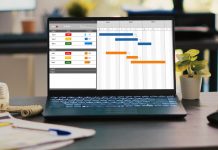
The control scope is a process that is probably one of the most crucial in maintaining the scope baseline and changes the scope baseline whenever necessary. The project managers will mainly look to avoid scope creep, which is a process where the scope is expanded in an uncontrolled manner.
What is Control Scope in a Project?
Control scope is the process of monitoring the status of the project and product scope and managing changes to the scope baseline. The control scope is a process that allows the scope baseline to be maintained throughout the life cycle of the project.
Control Scope Inputs
The following are included as the inputs in the control scope process:
- Project Management Plan
- Project Documents
- Work Performance Data
- Organizational Process Assets
Project Management Plan
The process of controlling scope involves many objectives that are to be met; the following criteria from the Project Management plan will help in managing scope.
- Scope Management Plan
The process of monitoring and controlling the project scope is the key benefit of the scope management plan. - Requirements Management Plan
A process that is a part of the Project Management Plan, which describes how the project requirements are analyzed, documented, and managed. - Change Management Plan
As the title suggests, the process of change management mainly concentrates on the changes that are taking place in the project during its lifecycle. - Configuration Management Plan
The process is used to identify the components that require formal change control and implement the process of control change to monitor the desired changes. - Scope Baseline
The scope baseline is the approved project scope and is used during scope change management to determine and prevent scope creep. Scope baseline primarily comprises the project scope statement, work breakdown structure, and WBS dictionary. Only upon implementing this scope baseline can the project be directed in the right direction. - Performance Measurement Baseline
During the process of using an earned value analysis, the performance measurement baseline is used to compare the actual results to determine if a change, corrective action, or preventive action is necessary.
Project Documents
The list of project documents that can be considered as inputs for this process are:
- Lessons Learned Register
To improve the scope control of the project, the lessons learned during the earlier stages of the project are accordingly applied or implemented in the project - Requirements Documentation
The project requirements should always be traced, tested, measured, complete, consistent, and importantly acceptable to the stakeholders. To ensure that this happens, the requirements should be well-documented to make it easier for the project manager to detect any deviation in the project. - Requirements Traceability Matrix
The Requirements Traceability Matrix is a tool that helps in detecting and identifying the impact of any changes that affect the project to deviate from the projected scope baseline and deliverables.
Work Performance Data
Work performance data is a method that documents the number of change requests received, the number of approved changes, and also the number of project deliverables completed.
Organizational Process Assets
The organizational process assets include any particular policies and procedures that have been laid down by the performing organization regarding scope management. It also covers aspects like formal and informal scopes that exist in a company and also looks into the methods of monitoring and reporting.
Tools and Techniques of Control Scope
The following tools and techniques are used in the control scope process:
- Variance Analysis
- Trend Analysis
Variance Analysis
Variance analysis is a method that is used to determine the degree and cause of differences that occur between the project baseline and the actual performance happening during the execution stage. Only when the comparison is made, can the project manager analyze the performance of the project.
Trend Analysis
Trend analysis is the method used to examine a project’s performance from time to time to see whether the performance of the project is deteriorating or improving.
Control Scope Outputs
The following are included as the outputs in the Control Scope process:
- Work Performance Information
- Change Requests
- Project Management Plan Updates
- Project Document Updates
Work Performance Information
The work performance information documents information on how the project scope is actually performing when compared to the scope baseline. The cause for the scope variance and the results that the changes yield, everything is documented under the work performance information. The entire process will provide a foundation for making scope decisions for the project.
Change Requests
The change requests to the scope baseline or other aspects of the Project Management plan usually arise when analyses are carried out on the scope performance. Change requests consist of preventive or corrective actions, defect repairs, or enhancement requests.
Project Management Plan Updates
Now and then, the Project Management plan needs to be updated. The main areas for updating are:
- Scope Management Plan
The scope management plan will be updated to reflect any changes that occur in the project to show how the scope will be managed. - Scope Baseline Updates
Whenever the approved change requests affect the project scope, the scope statement, the WBS, and the WBS dictionary are to be altered to meet the changes and are executed accordingly.
- Schedule Baseline
Any changes to the schedule baseline are incorporated in response to the approved changes in scope, resources, or schedule estimates. In certain situations, a revised scheduled baseline is required to provide a realistic basis for performance measurements.
- Cost Baseline
Cost baseline purpose is the same as schedule baseline. Whatever changes that occur are incorporated in response to the approved changes in scope, resources, or cost estimates. In certain situations, a revised cost baseline is required to provide a realistic basis for performance measurements.
- Performance Measurement Baseline
Every change related to the performance measurement baseline is incorporated in response to approved changes in scope, schedule performance, or cost estimates. In some cases, a change request is put forth to revise the performance measurement baseline to provide a realistic basis for performance measurement.
Project Documents Updates
Some of the documents that may need to be updated are the requirements documentation and the requirements traceability matrix. The requirements documentation describes how a project’s requirements meet a business’s needs. The matrix links the requirements to the need and helps trace its development throughout the project’s lifecycle. Ensuring that both documents are up to date helps manage and control changes to a project’s scope.
- Lessons Learned Register
The lessons learned register could be updated with techniques that are efficient and effective in controlling scope, including causes of differences and chosen corrective actions for the completion of the project.
- Requirements Documentation
The requirements documentation is mainly used to be updated with additional or changed requirements.
- Requirements Traceability Matrix
The primary purpose of the requirements traceability matrix is that it has to be updated to reflect updates in requirement documentation.
Conclusion
The importance of control scope is that it documents the changes and the stakeholders remain informed about the changes. This process will also necessitate the need to update the project documents, requirement documents, and traceability matrix for an efficient progression of the other processes in the Project lifecycle. Learn all the other processes and activities involved in the project life cycle with PMP certification training, and master all the knowledge areas in Project Management.
Know more about Project Management best practices through Invensis Learning’s Project Management certification training on PMP Boot Camp Online Training, Best CAPM Course Program, Prince2 Training, Project Management Fundamentals, etc.















